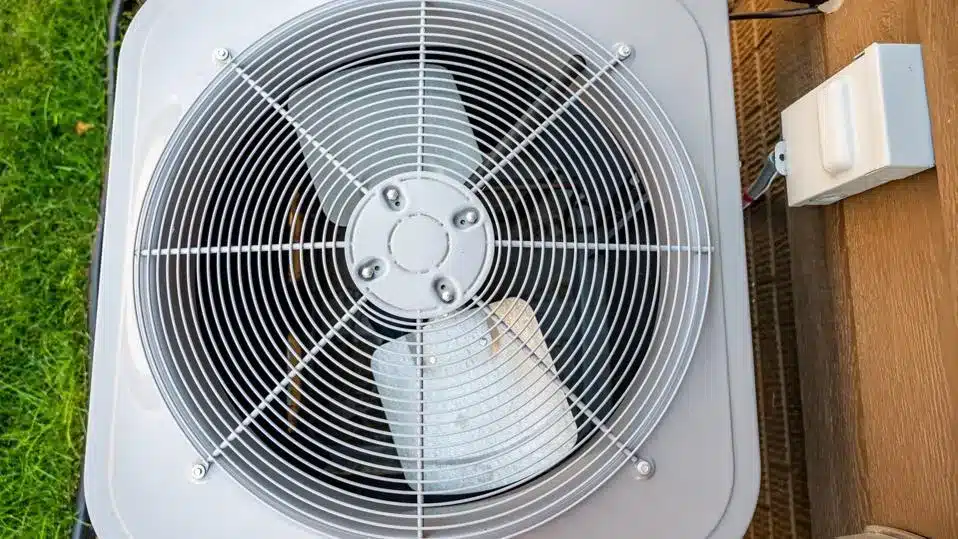Energy efficiency and indoor air quality (IAQ) are two crucial factors when it comes to building design and operation. Both are integral to creating environmentally friendly, cost-effective, and healthy indoor spaces. However, there is a pervasive belief that optimizing one can negatively impact the other. In this article, we’ll explore how energy efficiency and IAQ can coexist harmoniously in building design and operation.
HVAC Systems: A Crucial Link

Heating, ventilation, and air conditioning (HVAC) systems play a pivotal role in building energy consumption and indoor air quality. In most residential and commercial buildings, HVAC systems account for a substantial portion of energy usage. At the same time, these systems are essential for maintaining optimal indoor air quality.
Ventilation: A Balancing Act
One key aspect of IAQ is ventilation, which introduces fresh outdoor air to dilute indoor air pollutants. Ventilation consumes less energy than space heating and cooling, making it an essential component of both energy efficiency and IAQ.
However, increasing outdoor airflow can impact the heating and cooling loads. For instance, on a hot summer day, higher outdoor airflow forces the air conditioning system to work harder, while the same applies to heating systems on a cold winter day.
The United States Environmental Protection Agency (EPA) reports that indoor air can be 2 to 5 times more polluted than outdoor air, even in urban areas. Consequently, diluting indoor air with fresh outdoor air is an effective means of reducing indoor air pollutants. Since people spend approximately 90% of their time indoors, preserving indoor air quality is of paramount importance.
Balancing ventilation is critical—too little ventilation harms IAQ, but excessive ventilation leads to energy waste. The ideal ventilation system supplies just the right amount of outdoor air required by a building. Achieving this balance necessitates two design requirements:
- Monitoring indoor air pollutants and adjusting ventilation rates as needed.
- Ensuring that ventilation rates comply with local building codes’ minimum requirements.
The American Society of Heating, Refrigerating, and Air-Conditioning Engineers (ASHRAE) offers two methods for designing ventilation systems: the Ventilation Rate Procedure (VRP) and the Indoor Air Quality Procedure (IAQP). VRP prescribes ventilation rates based on building type, floor area, and occupancy, while IAQP relies on real-time air quality measurements. The IAQP, with its dynamic approach, has the potential to enhance efficiency, but many building codes adhere to VRP due to its simplicity.
A hybrid design approach can optimize ventilation performance while meeting code requirements. It combines minimum airflow rates dictated by building codes with smart controls that adjust airflow based on air quality measurements. This approach not only ensures IAQ but also saves on space heating and cooling.
Upgrading HVAC Systems For Dual Benefits
Energy efficiency measures, when not carefully executed, can negatively impact IAQ. For instance, arbitrary reductions in ventilation rates can result in higher indoor air pollutant concentrations. However, a professional energy audit can help identify energy-saving measures that don’t compromise IAQ or, in some cases, even improve it.

Many ventilation systems are of the constant air volume (CAV) type, always operating at full fan capacity. Converting them to variable air volume (VAV) systems with intelligent controls optimizes ventilation while safeguarding IAQ. The US EPA reports that such a conversion can lead to annual energy savings of 10% to 21%.
Furthermore, depending on the local climate, HVAC systems can be enhanced with airside economizers and energy recovery ventilators (ERVs).
- Airside Economizers: These systems determine when increasing outdoor airflow provides the same cooling effect as air conditioning. By supplying more outdoor air while reducing air conditioning output, airside economizers can reduce energy consumption.
- Energy Recovery Ventilators: ERVs exchange heat and humidity between outdoor air supply and exhaust air. This can lead to savings in heating, cooling, and humidity control. When humidity exchange is not necessary, the system is known as a heat recovery ventilator.
Airside economizers and ERVs are beneficial for increasing ventilation while preserving energy efficiency. However, their effectiveness varies depending on the local climate, necessitating professional energy modeling to evaluate their potential benefits.
Economic Implications Of IAQ

Improving IAQ is not just about well-being; it also has substantial economic advantages. A report by JLL Incorporated, a global real estate firm, highlights that labor and payroll expenses in commercial buildings surpass utility bills by tenfold. A mere 1% improvement in office productivity can be equivalent to a 10% improvement in energy and water efficiency. As IAQ contributes to a healthier and more comfortable indoor environment, it directly enhances productivity.
In Conclusion
Energy efficiency and IAQ need not be adversaries in building design and operation. By adopting smart design choices, optimizing ventilation, and upgrading HVAC systems with a focus on IAQ, building owners can achieve both goals simultaneously. This not only results in cost savings and reduced environmental impact but also enhances the health and well-being of occupants, fostering increased productivity and satisfaction. Building design and operation should strive to harness the potential for synergy between energy efficiency and IAQ, ultimately creating healthier, more sustainable indoor environments.





GIPHY App Key not set. Please check settings